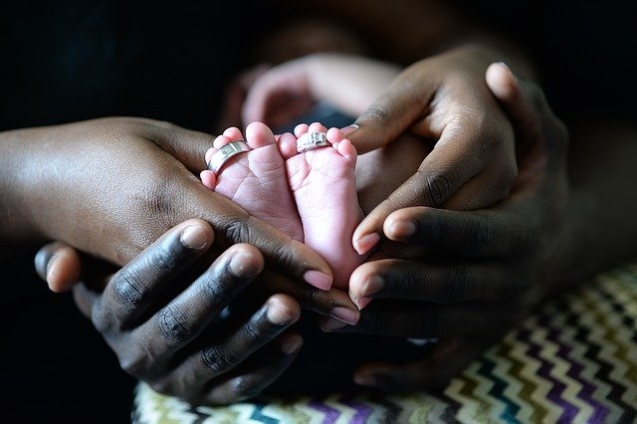Data from the Births and Deaths Registry of Ghana indicates that for every recorded death in 2022, 13 births ensued. This was indicated in the 2022 Statistical reports on births and deaths registration.
According to the reports, "In 2022, Ghana recorded a total of 50,992 registered deaths," whereas "a total of 677,140 births were officially registered and documented."
This translates to a death to birth ratio of 1:13 indicating that the number of births registered are 13 times the number of deaths recorded.
Details of the report showed a growing trend in death to birth ratio over the years.
The 2022 report indicated a significant gender disparity in mortality rates, with men comprising 60% of total recorded deaths. This observation is juxtaposed against a more balanced gender distribution in births, where men accounted for 50.8% of registrations. This discrepancy suggests a potential long-term demographic shift, as the male population may gradually decrease over time due to a mortality rate outpacing the birth rate.
Furthermore, a geographical analysis reveals notable regional variations in both births and deaths. Approximately 46% of total registered births were concentrated in the Ashanti, Greater Accra, and Northern regions. Conversely, more than half of registered deaths occurred in just three regions: Greater Accra, Ashanti, and Eastern. This geographic disparity in mortality rates could be indicative of varying healthcare access, socio-economic factors, or other regional influences impacting population dynamics.
The 2022 report underscored a significant gender disparity in mortality rates, with men comprising 60% of total recorded deaths. This observation is juxtaposed against a more balanced gender distribution in births, where men accounted for 50.8% of registrations. This discrepancy suggests a potential long-term demographic shift, as the male population may gradually decrease over time due to a mortality rate outpacing the birth rate.
Furthermore, a geographical analysis reveals notable regional variations in both births and deaths. Approximately 46% of total registered births were concentrated in the Ashanti, Greater Accra, and Northern regions. Conversely, more than half of registered deaths occurred in just three regions: Greater Accra, Ashanti, and Eastern. This geographic disparity in mortality rates could be indicative of varying healthcare access, socio-economic factors, or other regional influences impacting population dynamics.
Latest Stories
-
Paris 2024: Opening ceremony showcases grandiose celebration of French culture and diversity
1 hour -
How decline of Indian vultures led to 500,000 human deaths
2 hours -
Paris 2024: Ghana rocks ‘fabulous fugu’ at olympics opening ceremony
2 hours -
Trust Hospital faces financial strain with rising debt levels – Auditor-General’s report
3 hours -
Electrochem lease: Allocate portions of land to Songor people – Resident demand
3 hours -
82 widows receive financial aid from Chayil Foundation
3 hours -
The silent struggles: Female journalists grapple with Ghana’s high cost of living
3 hours -
BoG yet to make any payment to Service Ghana Auto Group
3 hours -
‘Crushed Young’: The Multimedia Group, JL Properties surprise accident victim’s family with fully-furnished apartment
4 hours -
Asante Kotoko needs structure that would outlive any administration – Opoku Nti
4 hours -
JoyNews exposé on Customs officials demanding bribes airs on July 29
5 hours -
JoyNews Impact Maker Awardee ships first consignment of honey from Kwahu Afram Plains
6 hours -
Joint committee under fire over report on salt mining lease granted Electrochem
6 hours -
Life Lounge with Edem Knight-Tay: Don’t be beaten the third time
6 hours -
Pro-NPP group launched to help ‘Break the 8’
7 hours

